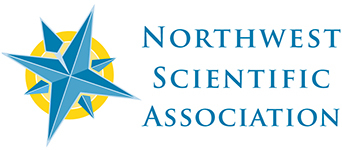WELCOME TO NWSA ONLINE!
Mission Statement: We are a network of professional and amateur scientists from diverse disciplines that provides support and a forum for research and education relevant to the environment and resource management of northwestern North America. To accomplish our mission, the association publishes a quarterly journal, convenes an annual scientific meeting, and awards student research grants.
Since 1923, the NWSA has existed for the purpose of promoting scientific research and disseminating scientific knowledge. Our annual meetings are held throughout the Pacific Northwest and provide an opportunity to share recent findings and foster collaborative interactions.
NWSA publishes four issues of Northwest Science each year. A peer reviewed journal, Northwest Science is an outlet for original papers on wide ranging topics in the natural sciences, including anthropology, aquatic biology, botany, ecology, fisheries, forestry, geology, geography, hydrology, soils, wildlife biology, and zoology. The geographic scope of Northwest Science is the northwestern United States and western Canada.
Announcements
LATEST FROM THE JOURNAL
Members should click here to access Northwest Science on BioOne.org (note: use "log in" link at top of page first).
More information about journal access on the journal page
Click here to access abstracts of “Accepted articles in press” for the upcoming issue of Northwest Science.
Northwest Science 98 (1) (In Progress)
Table of Contents
Articles
Early Development of Pacific Surf Smelt (Hypomesus pretiosus) Kathleen G. Neely, Mark Tagal
Native Ponderosa Pine at Joint Base Lewis–McChord, Washington Jeffrey R. Foster
Seasonal and Diel Movements of Adult Yellow Perch between Two Contrasting Lakes (Lake Union and Lake Washington) in the Seattle Metropolitan Area Roger A. Tabor, Daniel W. Lantz, Lauren S. Urgenson, Aaron Bosworth, Eric J. Warner, Jeffery R. Johnson
Does Surface-applied Biochar Alter Insect Utilization of Downed Ponderosa Pine (Pinus ponderosa) Bolts? Stacey Rice-Marshall, John Randall, Stephen P. Cook
Demography and Habitat Associations of the Basalt Cactus Pediocactus nigrispinus Zarha S. Dillon-Zuppelli, Mary E. Poulson, Eric A. Graham
Research Notes
Comparison of Lapilli Otoliths and Pectoral Fin Rays for Estimating Age of Northern Pikeminnows Caleb M. Wilson, Bryce Marciniak, Mike Thomas, Jordan Messner, Matthew P. Corsi, Michael C. Quist
